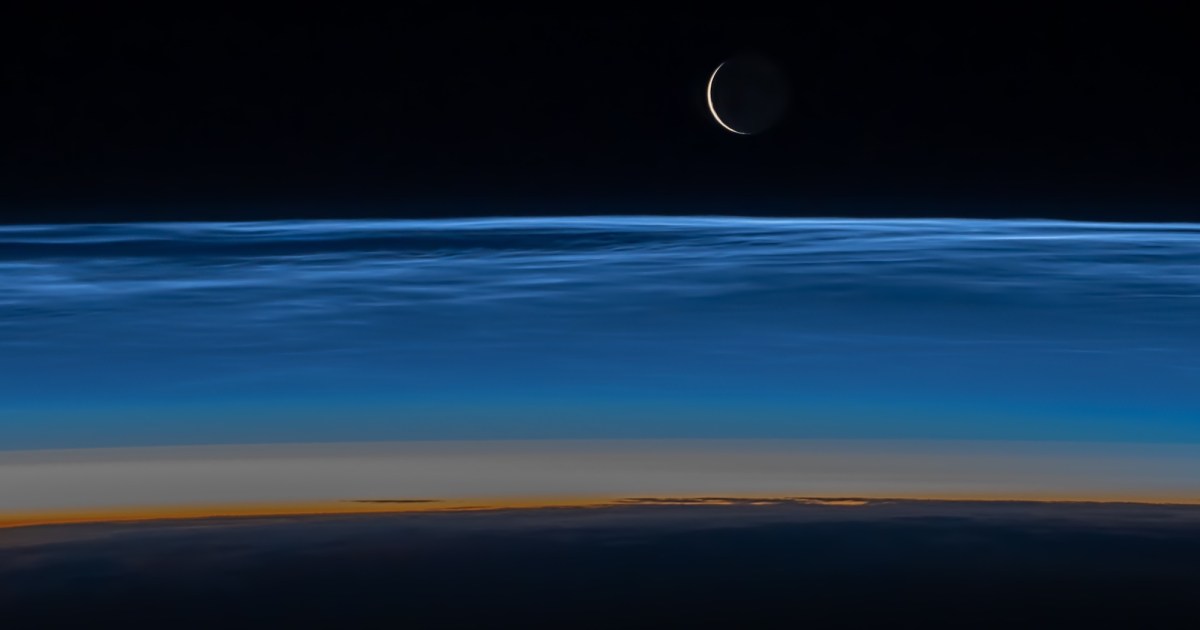NASA astronaut Matthew Dominick was sent to the International Space Station (ISS) in March as commander of the SpaceX Crew-8 mission.
During his time aboard the space base, Dominick shared some stunning images of both the inside and outside of the ISS.
Keen photographers will be pleased to know that the astronaut also shares the camera settings he used for each of the shots. A recent one is a real beauty, showing the moon above the Earth just before sunrise.
1/ A crescent moon rises from the night clouds and appears to gaze toward the horizon, awaiting the approaching sunrise.
1/250s, f5.6, ISO 6400, 170mm (50 to 500mm lens), cropped photo.twitter.com/6vq9NfdXx0
– Matthew Dominick (@dominickmatthew) July 6, 2024
This creative image of the interior of an ISS module shows Dominick using a flash to experiment with “light painting.”
Happy 4th of July!
No fireworks on ISS, so we used camera flashes instead. Today we experimented with “light painting”.
15 sec, f22, 24mm, ISO 500. Lights off. Our own flashes manually controlled. Only ambient light from computers and experiment LEDs.
1/ Floating through photo.twitter.com/fe8arQh3aJ
– Matthew Dominick (@dominickmatthew) July 4, 2024
In this series of images, Dominick demonstrates how different shutter speeds can affect the way the Earth appears in an image.
A common theme when posting nighttime images of the ISS is exposure length. There are guidelines for shooting astrophotography from Earth, but what happens when shooting at orbital speeds? Thread shows images at ISO 6400, f1.4, and exposures ranging from 10s to 1/4s photo.twitter.com/3YNwTeoOX7
– Matthew Dominick (@dominickmatthew) July 1, 2024
Here is a stunning night shot from the ISS showing the Nile River flowing into the Mediterranean Sea.
Flying over the Nile to the Mediterranean Sea.
1/5s, f1.4, ISO 12800
Have to remove the dark frame and other edits later. It was amazing to see on such a clear night. photo.twitter.com/fMucJdfw74
– Matthew Dominick (@dominickmatthew) June 30, 2024
This one shows an astronaut looking out a window of the SpaceX Crew Dragon spacecraft docked at the ISS. Dominick has also experimented with time-lapses, which you can watch below.
A short timelapse made from the individual images taken while finding the right light for the image above. Faint blue light from a moon just beginning to appear on the horizon in front of the ISS illuminates Dragon. photo.twitter.com/QeTJwYSAb3
– Matthew Dominick (@dominickmatthew) June 29, 2024
Dominick mounts the camera on a monopod and uses a long shutter speed of 1/5 to create the sense of movement in a photo he takes from one of the station’s many modules.
A view through the lab on the ISS. photo.twitter.com/6jzajAyy1E
– Matthew Dominick (@dominickmatthew) June 28, 2024
This image shows part of the ISS against a dramatic background of star trails.
Experimenting with long exposures to capture star trails with the beautiful structures of the ISS. In the last of five 30-second exposures, the sun broke through the horizon, creating the brilliant blue on the solar panels of the service module. 5 stacked images, 24mm, f4, ISO 800. photo.twitter.com/eyX92X2CoY
– Matthew Dominick (@dominickmatthew) June 25, 2024
Finally, check out this beautiful time-lapse shot of the docked Starliner spacecraft with an aurora in the distance.
Timelapse video of aurora streaming behind Starliner, taken from a Dragon window with Butch and Suni in the Starliner window. Their flashlights illuminate the cabin.
0.5 second interval, f 1.4, ISO 6400, 1/4 second exposure time, 24mm lens. photo.twitter.com/gZuxYZu0Af
– Matthew Dominick (@dominickmatthew) June 16, 2024
Another former resident of the ISS also earned a reputation for taking stunning photographs. French astronaut Thomas Pesquet usually pointed his lens at Earth, 250 miles below, and captured stunning images that perfectly captured the beauty of our planet.
